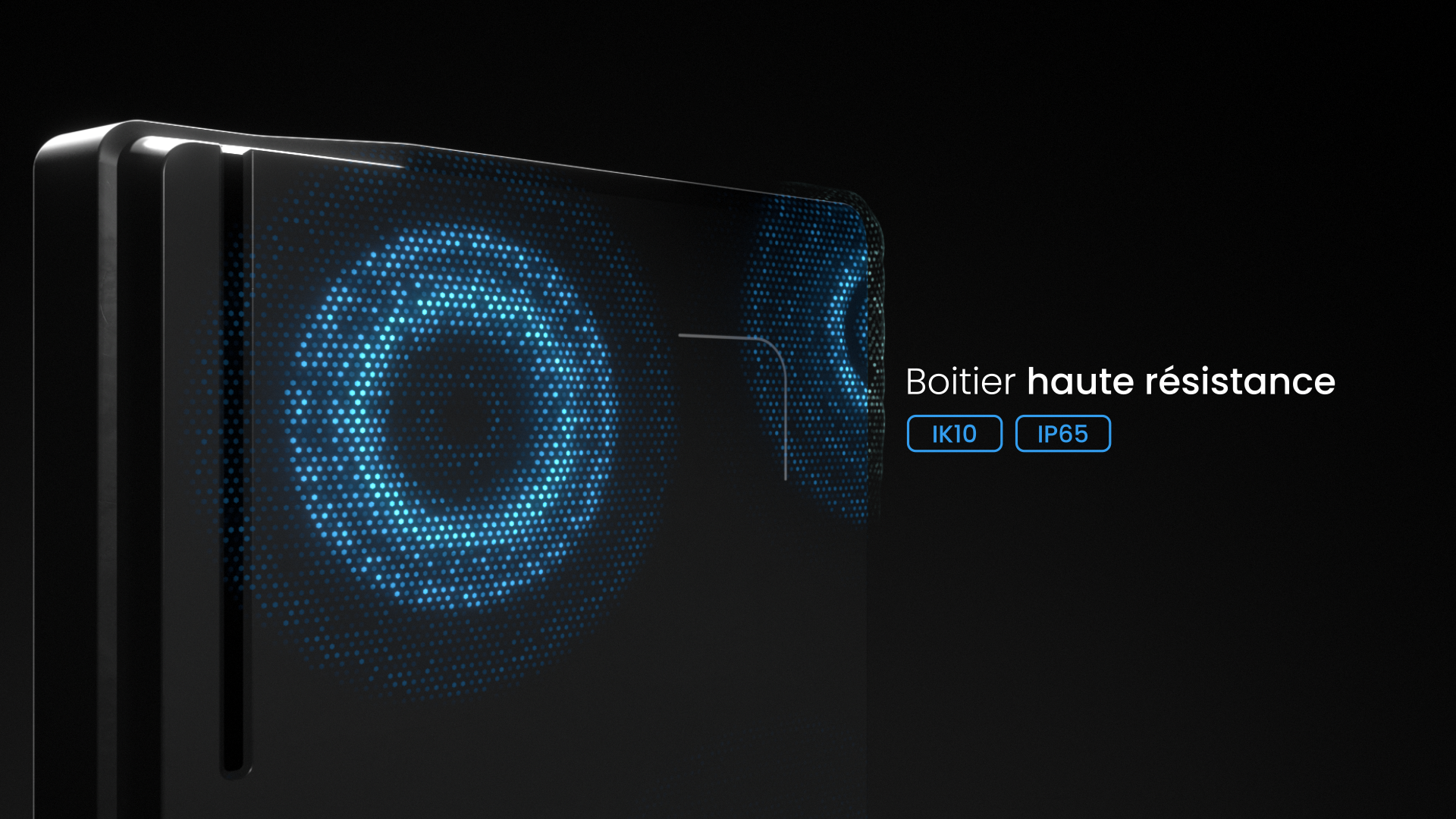Key facts about IP65 and IK10 protection ratings

IP65 and IK10 protection ratings: guaranteeing product robustness
IP65 and IK10 protection ratings: what you need to know
A key role: guaranteeing product robustness
Protection ratings are used to assess the resistance of electronic devices to various types of risk. As access control devices are often installed outdoors, they must be able to withstand potentially aggressive conditions. Several aspects are therefore measured to determine their level of protection:
- Resistance to mechanical impact (anti-vandalism),
- Protection against particle intrusion,
- Water resistance.
Two types of index are used to define these characteristics:
- The IK index, which measures protection against impact,
- The IP index, which assesses liquid and solid tightness.
IK: mechanical resistance
The IK index quantifies the ability of an electrical or electronic device to withstand mechanical shocks. This index indicates the extent to which a product’s enclosure can withstand physical impacts.
Mechanical shock resistance tests generally involve dropping objects of varying weights and heights onto the device, depending on the IK levels to be tested.
IK indices are expressed as follows:
- Two letters: “IK”,
- Two numbers from 00 to 10.
The higher the number, the greater the shock resistance of the device.
IP: protection against the ingress of solids and liquids
The IP rating, short for “Ingress Protection”, is an international standard defined by the International Electrotechnical Commission. It is used to classify products according to their protection against the ingress of solids and liquids.
IP ratings are formed as follows:
Two letters: “IP”,
- The first number (from 0 to 6) indicates resistance to ingress of solid particles (such as dust),
- The second number (from 0 to 8) indicates protection against water.
As with the IK index, the higher the number, the more effective the protection against the element in question.

